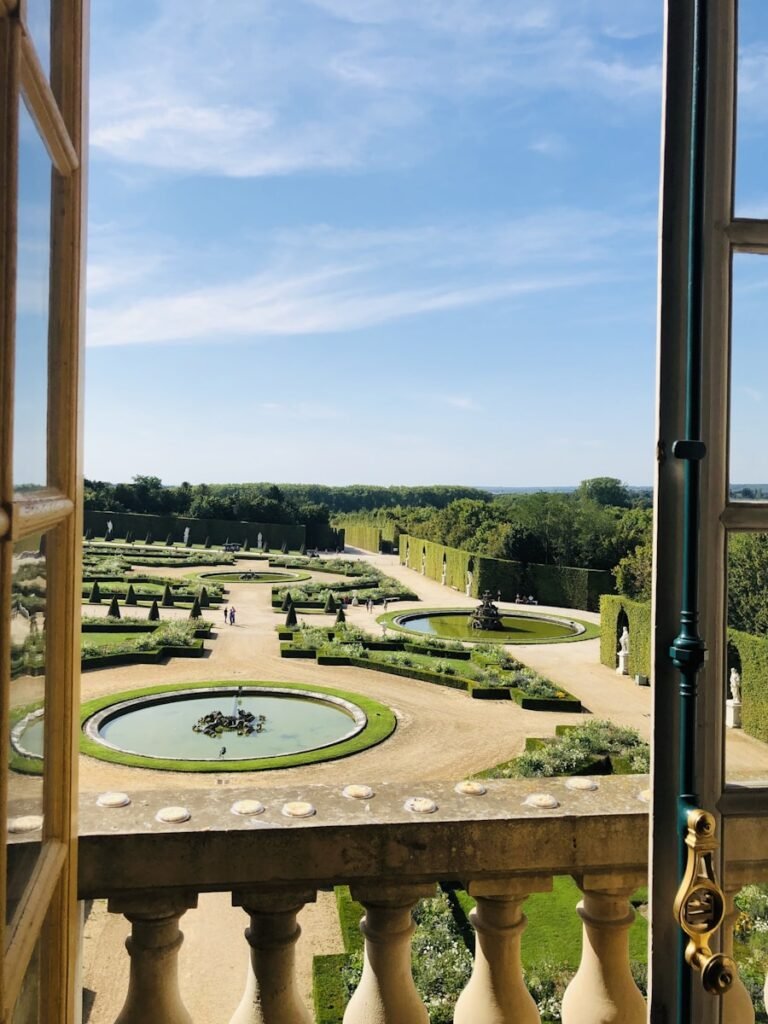The Palace of Versailles is not just an amazing building – it represents the absolute monarchy of the Ancien Régime and plays a key role in French history. Built in the 17th century by King Louis XIV, Versailles was both a royal home and the center of political power in France until the French Revolution. Its beauty and size show the king’s wealth and power.

A Symbol of Absolute Monarchy
King Louis XIV, known as the Sun King, turned a simple hunting lodge into a stunning palace. He wanted Versailles to be a place that showed his control over the nobility and to centralize the government. The grand gardens, luxurious rooms, and the famous Hall of Mirrors were meant to impress visitors and highlight the king’s authority. The palace’s design became a model for other European palaces.


The Center of Political Decisions
Versailles was more than just a royal residence; it was where important decisions about the country were made. In 1789, the Estates-General met there, which started the French Revolution. Many key events happened at Versailles, like signing treaties, including the Treaty of Paris in 1783, which ended the American Revolutionary War. These events shaped not only France but also the world.


A Cultural Hub
The Palace of Versailles was also a center for culture. It attracted artists, writers, and thinkers, helping French art and culture to thrive during the 17th and 18th centuries. The palace has a remarkable collection of art, including paintings by famous artists like Charles Le Brun and sculptures by Antoine Coysevox. The gardens, designed by André Le Nôtre, are considered a masterpiece of landscape design, showcasing the beauty of French formal gardens.


The Revolution and Its Impact
The French Revolution changed everything for Versailles. In 1789, revolutionaries stormed the palace, forcing the royal family to leave and marking the end of monarchy in France. Versailles became a symbol of the excesses of the monarchy and the people’s desire for change. Today, it is a UNESCO World Heritage site and a museum, attracting millions of visitors who come to appreciate its beauty and history.

Visiting the Palace of Versailles
Tickets
General Admission
Tickets for adults typically cost around €20. This includes access to the palace and gardens. Discounts may be available for students and young people under 26.

Guided Tours
If you prefer a guided experience, you can book a tour, which may cost between €30 and €50, depending on the length and type of tour.

Free Entry
Visitors under 18 and EU residents under 26 can enter for free, but it’s essential to book a timed entry in advance online.

Opening Hours
The palace is open every day except Mondays. From April to October, it’s open from 9 AM to 6:30 PM. In the winter months, hours may vary, so checking the official website for current times is a good idea.

Getting There
The palace is located about 20 kilometers (12 miles) west of Paris. You can easily reach it by train (RER C) or by taking a bus from central Paris. It’s a popular destination, so consider visiting early in the day or later in the afternoon to avoid large crowds.

Conclusion
The Palace of Versailles is an important part of French history. It represents the power of the monarchy, key political decisions, and cultural achievements. Its rich history continues to inspire and teach us about the complexities of power, art, and revolution in shaping the modern world. Whether you’re an art and history lover, or simply looking to explore a stunning palace, Versailles is a must-visit destination.












